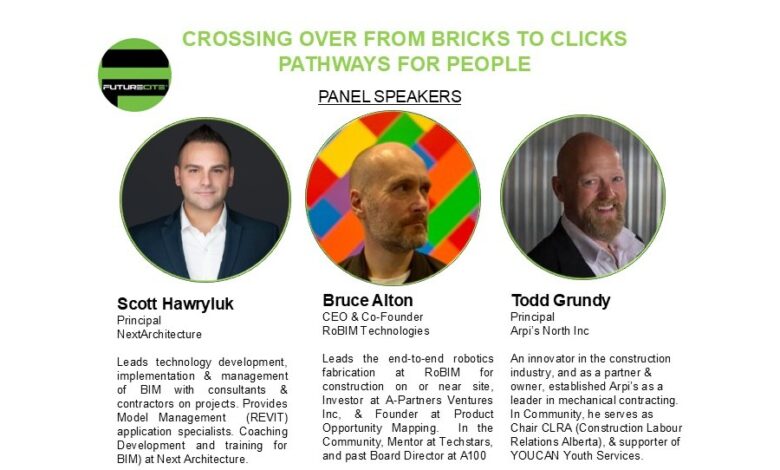

Human talent, innovation and knowledge will still be in high demand – just in different ways.
Learn how to use AI tools to augment the more routine and mundane aspects of “work” so you can focus on more complex and creative human activities where machines are not as efficient or effective as humans like you!
You’ll get the inside scoop from Employers on how you can transition into the trades entering right from high school, trades schools or from another industry sector! Learn from experts in Architecture &Engineering, Subtrades, and new emerging robotics in construction automation.
Find out what this means for your day-to-day work now, from safer work environments more efficient jobsites, to exciting ways to build better projects! Discover what skills you can start building today to be ready for tomorrow – well before employment shifts from the digital transition!
Interested in the “Trades”?
Thinking of transitioning from another industry? You need to start now! Timing window is right for Candidates who are ready with the right skills to work, as 41% of the current construction workforce will be retiring by 2030!
- Find out first hand how the construction workforce will evolve in the next few years?
- What can you do to upskill to get a job, stay ahead, or change occupations?
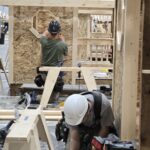
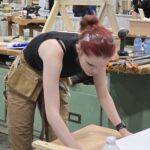
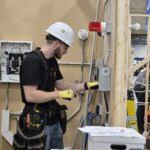
For those curious about “Hard Hats to High Tech” in the trades, you will discover current and future ways to advance your career, and find out what new skills you will need to attain or hone, to thrive in the new digital economy. Construction looking to tech for productivity

What does it take to transition from “Bricks to Clicks” from design to construction?
What’s involved in using tools and processes like Building Information Modelling or “BIM” for people and companies to save time, and to make sites safe working environments?
How will robotic automation like RoBIM in prefabrication of modules impact your work in construction?
Three Panel Speakers:
Scott Hawryluk (Digital Documentation), Todd Grundy (SubTrades) and Bruce Alton (Robotic Automation) share insights on actual projects using BIM, where they have demonstrated success– from design to digital documentation and tools and tactics for time and cost savings using digital-enabled site installation.
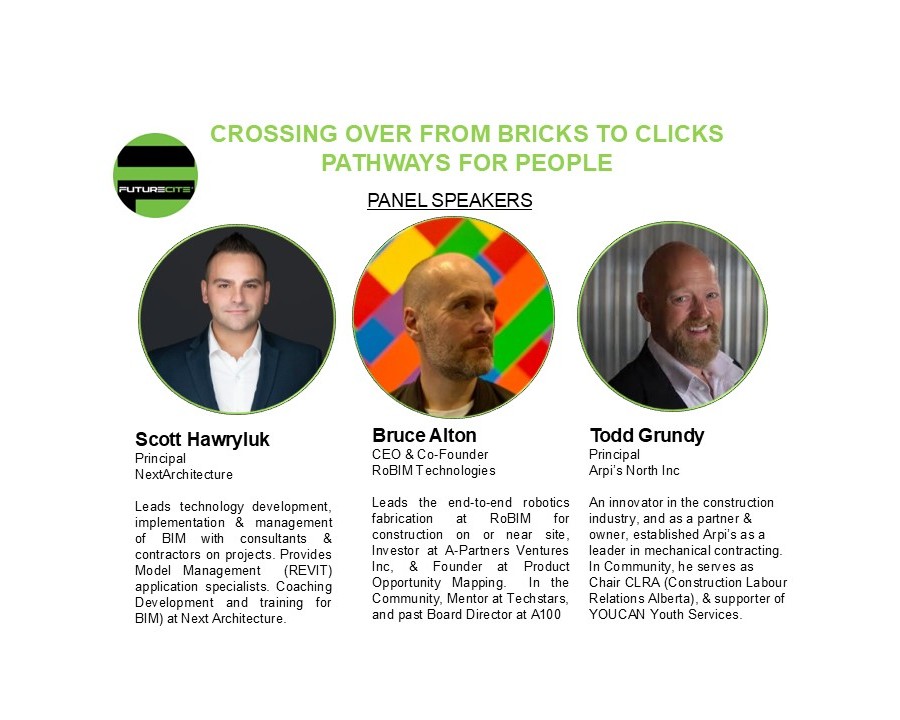
Scott Hawryluk: on the design documentation perspective – shifting from the traditional blueprint to BIM access for costing, bids and then construction by the contractor and the subtrades:
- From design in BIM to digital blueprint for the Trades to cost and then implement – how does it work in an actual project and benefits? Talk about savings to reduce project and insurance costs.
- What training is involved and how long does it take? Will the demand for BIM Jobs increase?
Todd Grundy: on subtrade specific use of BIM – where it saved his people time and costs in installing mechanical equipment in Rogers Place:
- So how do the trades like working in BIM? Speak to the Roger’s Place mechanical room comparison that Arpis did and the outcomes that convinced your teams to transition from 2D blueprints to 3D BIM!
- Cost and Time savings for Arpis – Share exactly the steps saved from traditional methods in time in estimating, bidding and site work, and how this can benefit subtrades where project are done on BIM. As well architects on BIM still work with trades who are not on BIM…only matter of time for adoption.
Bruce Alton: on specific use of Robotics in building prefabricated modules for onsite assembly by people, – the next step beyond BIM with his proprietary technology platform RoBIM:
- How does RoBIM along with BIM foster Cross-Disciplinary Collaboration and time and cost savings? Share how construction errors and unwanted change orders are reduced with RoBIM’s software using industry-standard design tools and BIM standards – and the access to detail information for architects and construction professionals using digital design workflows,
- What’s involved in bridging these skill gaps – for BIM and then for RoboBIM? What training is needed for students, professionals, the Trades (site assembly) and for people looking at transitioning (e.g. no construction skills) from other industry sectors?
Quick Take Aways!
Todd and Scott comment on how Robotic Animation impacts design documentation and on site construction today and into the future!
Also if you’re interested in other “Trade” occupations check out the FutureCite Connector event on Healthcare https://futurecite.com/pathways-for-people-healthcare-horizons-2025/




